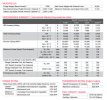Here is a link to Bell 407GXi performance charts - in the back of this brochure - also good detail on the life limited parts and specific components that do have TBO intervals. After everything, Bell claims < $600 per hour. That's pretty damn good - and why the 407 makes money for commercial operators pretty much everywhere.
If I had to wager, I'd say Bell will come out ahead on acquisition and sustainability costs. But this contract award wont be just about cost.
Bell and Leonardo both have yet to be awarded SP IFR certification. That's the big unknown and variable in all this IMHO. Will NAVAIR/CNATRA value 2 engines and IFR over cost? That's an influence peddling and sales game - Airbus is quite good at that.
Airbus would manufacture in Mississippi - and Roger Wicker is a influential guy on Senate Armed Services Committee - specifically the Seapower subcommittee. That will be a major factor.
If I had to wager, I'd say Bell will come out ahead on acquisition and sustainability costs. But this contract award wont be just about cost.
Bell and Leonardo both have yet to be awarded SP IFR certification. That's the big unknown and variable in all this IMHO. Will NAVAIR/CNATRA value 2 engines and IFR over cost? That's an influence peddling and sales game - Airbus is quite good at that.
Airbus would manufacture in Mississippi - and Roger Wicker is a influential guy on Senate Armed Services Committee - specifically the Seapower subcommittee. That will be a major factor.
Last edited:

